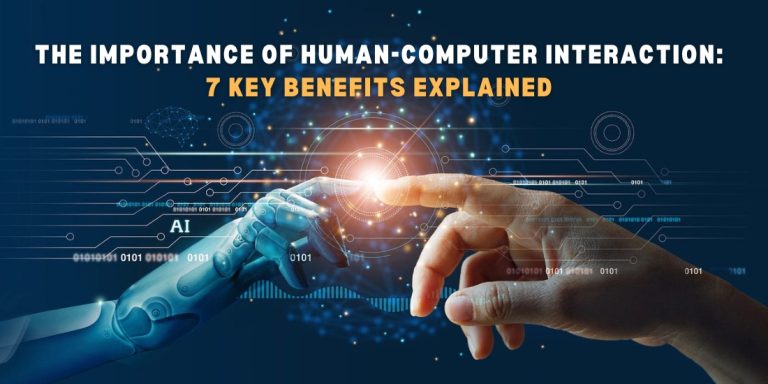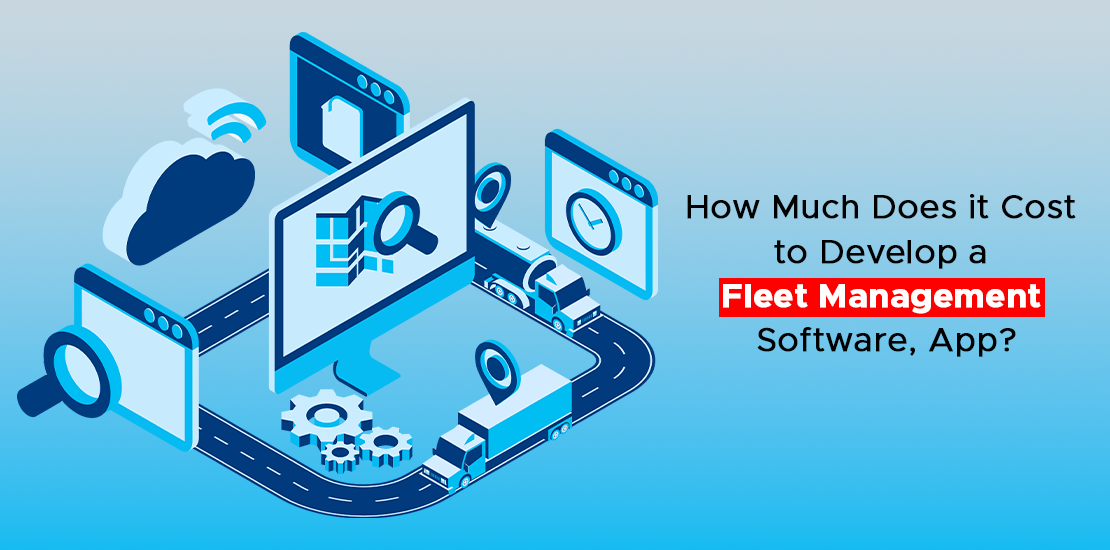The Importance of Human-Computer Interaction: 7 Key Benefits Explained

- Introduction
- What is Human-Computer Interaction (HCI)
- Important of Human-Computer Interaction
- Components of Human-Computer Interaction
- Rise of Human-Computer Interaction
- Future of Human-Computer Interaction (HCI)
- Safety and Security
- Conclusion
- FAQs about HCI
Human-Computer Interaction (HCI) stands at the head of technological advancement, HCI focuses on understanding and improving how users interact with computers and digital systems, this blog explores the important critical reasons why it is essential for creating user-friendly and efficient digital connections, it focuses on making these interactions easy and effective HCI is crucial because it helps us understand what makes technology user-friendly.
Whether using a smartphone, browsing the internet, or working with software at the office, it ensures that these experiences are smooth and enjoyable. By studying how people think and behave when they use technology, HCI experts design interfaces that respond to our needs and make tasks easier and understanding it means or understanding how technology can be designed to fit our lives better, from touchscreens on tablets to voice assistants like Siri and Alexa, it is behind the scenes making sure these tools are intuitive and helpful. As technology continues to advance, HCI will play an even bigger role in shaping how we interact with the digital world around us and it will highlight how it improves user experiences, boosts productivity, ensures accessibility for all users, and enhances safety and security in digital environments.
Let’s explore why it is not just a buzzword but a fundamental aspect of making technology work better for everyone.
Human-Computer Interaction (HCI) is a field that brings together computer science, design, psychology, and engineering to improve how people interact with technology. It’s about making technology user-friendly and enjoyable. It focuses on designing interfaces such as screens, buttons, and menus that are easy for everyone to understand and use, it also studies how people think and behave when using technology to develop new ways for people to interact with computers and devices.
This includes technologies like touchscreens, voice commands, and virtual reality. The goal is to make these interactions smooth, intuitive, and satisfying, so that technology seamlessly integrates into our daily lives.
It is essential for making technology work smoothly and effectively for everyone. Here’s why Human-Computer Interaction (HCI) matters:
- User-Friendliness: HCI designs interfaces—like screens, buttons, and menus—that are easy for everyone to understand and use. This ensures that technology is not confusing or frustrating to navigate, making tasks simpler and more enjoyable.
- Productivity Boost: By organizing information logically and providing intuitive tools, HCI helps users work faster and more efficiently. This means less time spent on figuring out how to use devices and more time focused on productive tasks.
- Error Reduction: Well-designed HCI interfaces are aligned with how people naturally think and behave. Clear instructions, feedback mechanisms, and user-friendly layouts minimize mistakes and increase confidence when using technology.
- Accessibility: HCI ensures that technology is accessible to everyone, including people with disabilities. Features like voice commands, screen magnifiers, and adjustable fonts make it possible for all users to interact with devices comfortably and effectively.
- Engagement: HCI creates engaging and interactive interfaces that captivate users and encourage prolonged interaction. This is crucial for applications ranging from educational tools to entertainment platforms, enhancing user satisfaction and retention.
- Innovation Driver: By understanding user needs and behaviors, HCI drives innovation in technology. This involves developing new features and improving existing ones to better meet the demands and preferences of users.
- Safety and Security: HCI designs prioritize the safety and security of users’ data and interactions. Robust authentication methods, encryption, and privacy settings protect against unauthorized access and ensure a safe digital experience.
Human-Computer Interaction (HCI) involves several key components that work together to make technology easier and more enjoyable to use for everyone.
- HCI focuses on designing interfaces such as screens, buttons, and menus. These interfaces are designed to be simple and intuitive so that users can easily navigate through applications and websites. For example, a well-designed interface on a smartphone app makes it easy to find and use different features without confusion.
- HCI is about understanding how people think and behave when using technology. This includes studying what makes users click, tap, or swipe in certain ways. By understanding these behaviors, HCI experts can create interfaces that match how people naturally interact with devices. This makes technology more intuitive and user-friendly.
- HCI ensures that technology is accessible to everyone. This involves designing features that accommodate different needs and abilities. For instance, voice commands allow people who can’t type to control devices verbally. Similarly, using larger text or adjustable fonts helps users with vision problems read content more comfortably, by making technology accessible, HCI promotes inclusivity and ensures that everyone can benefit from digital advancements.
As technology grows, so does the need for HCI. More devices mean more interactions. HCI helps make these interactions smoother and more enjoyable, from smartphones that understand your gestures to smart home devices that respond to your voice commands.
As technology continues to evolve at an unmatched pace, the field of Human-Computer Interaction (HCI) is becoming increasingly critical in shaping how we interact with digital systems. HCI focuses on creating user-friendly interfaces and improving the overall user experience, ensuring that technology is accessible, intuitive, and beneficial for all. This blog explores the latest advancements in HCI, their applications, and the future of this exciting field.
Think about your everyday life with technology—smartphones with touchscreens that respond to your gestures, voice assistants like Siri and Alexa that answer your questions, or video game controllers that let you interact with virtual worlds. All of these are examples of HCI making technology easier and more interactive.
HCI also focuses on keeping technology safe. This means designing systems that protect our information and prevent problems like hacking or viruses. When we use technology, we want to feel safe and confident that our data is secure—that’s where HCI plays a crucial role.
HCI is about making our digital lives better. By understanding how people use technology and designing it with them in mind, HCI makes sure that technology helps us instead of confusing us. Whether it’s at home, school, or work, HCI ensures that technology enhances our lives in meaningful ways.
Human-Computer Interaction makes technology easier to use, reduces mistakes, and ensures everyone can access and enjoy it.
Smartphones, voice assistants, and even video game controllers are all examples of HCI in action.
We collaborate closely with clients to understand their goals and target audience. Through HCI expertise, we recommend strategies to optimize user interfaces, improve user engagement, and drive business growth and our goal is to empower clients with intuitive and impactful digital solutions.
HCI will continue to make technology smarter and more intuitive, with new ways to interact like virtual reality and artificial intelligence.
DxMinds is exploring emerging trends in HCI, including augmented reality (AR), virtual reality (VR), natural language processing (NLP), and AI-driven interfaces and these technologies aim to further enhance user interactions, personalization, and immersion in digital experiences.


